Dirt Road Stabilization: Techniques and Benefits for Long-Term Durability
Dirt road stabilization techniques can improve the durability, safety, and environmental impact of unpaved roads in rural and other areas. Dirt roads are prone to erosion, dust, and wear from vehicle traffic, making them challenging to maintain over time. Without proper stabilization, dirt roads can quickly deteriorate, leading to hazardous driving conditions, higher maintenance costs, and environmental damage.
Dirt roads play a key role in the overall transportation plan for more than just rural communities. And they offer access to areas where paved roads are not feasible or cost-effective. Dirt roads can be found in the following areas.
- Rural communities
- Agricultural operations
- Open pit and underground mines
- Construction sites
- Forest service control roads
- Campground access roads
- Parking lots
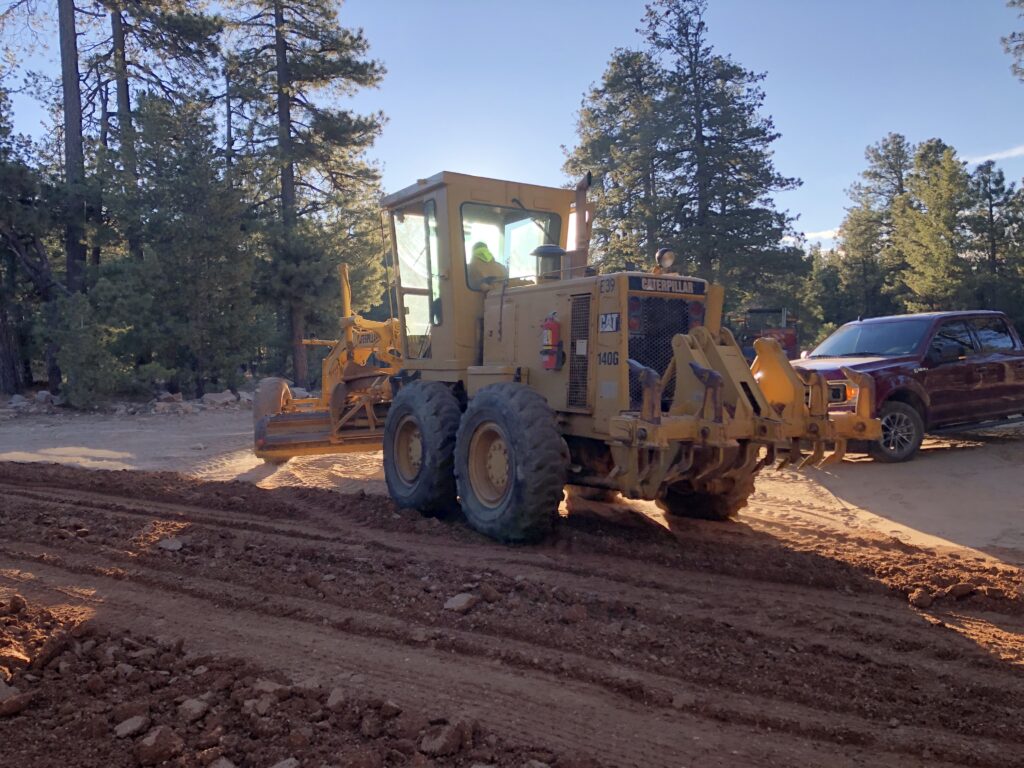
Typically, if the traffic on a road is less than 200 cars a day, a stabilized dirt road can be an affordable alternative to paving it. In the Federal Highway Administration’s Gravel Roads Construction & Maintenance Guide they note the benefits of dust control and stabilization include: reduced dust, decreased gravel loss, and less blade maintenance.
In this post, we’ll explore why dirt road stabilization is essential, the common methods used, and the benefits it provides.
Why Stabilize Dirt Roads?
Dirt roads are exposed to elements like snow, rain, wind, and vehicle traffic. Over time, these forces can erode the road surface, creating ruts, washboards, potholes, and loose dust. Driving on these roads can be difficult and dangerous. Erosion also affects nearby ecosystems by washing sediment into streams and rivers, contributing to water pollution. It can also significantly add to the expenses of road departments who must constantly replace the aggregate that washes off the road.
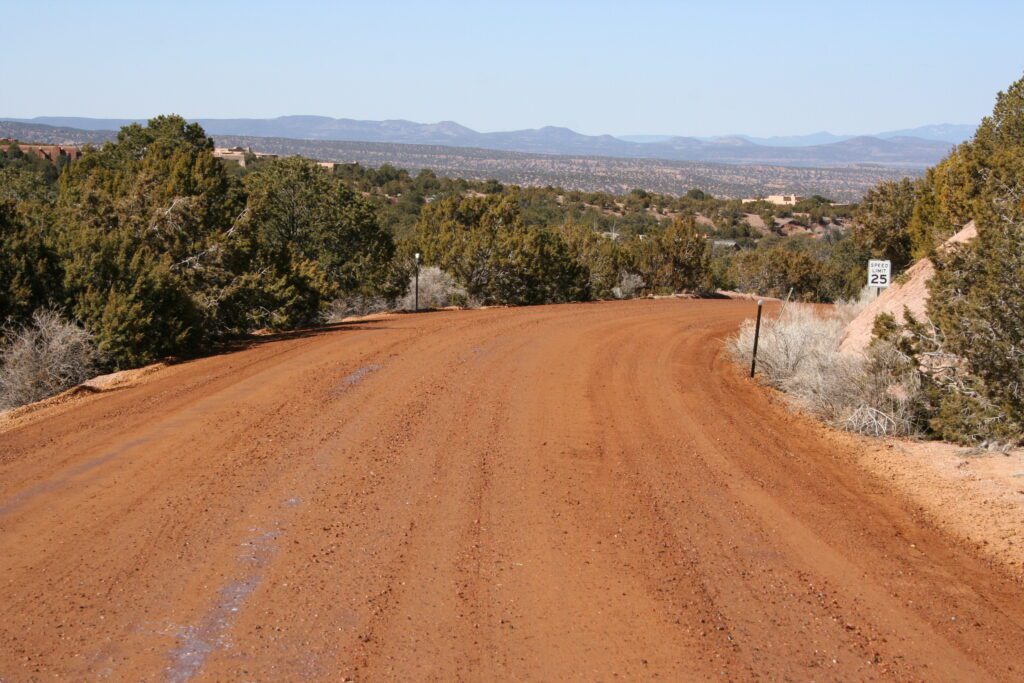


Stabilizing a dirt road involves reinforcing its surface to reduce erosion, minimize dust, and enhance the road’s load-bearing capacity. By employing stabilization techniques, road superintendents can extend the life of the road, improve safety, and lower long-term maintenance costs.
Common Dirt Road Stabilization Techniques
There are several methods available for stabilizing dirt roads, ranging from traditional approaches to modern technological solutions. The best method often depends on the road’s location, soil type, traffic volume, and budget.
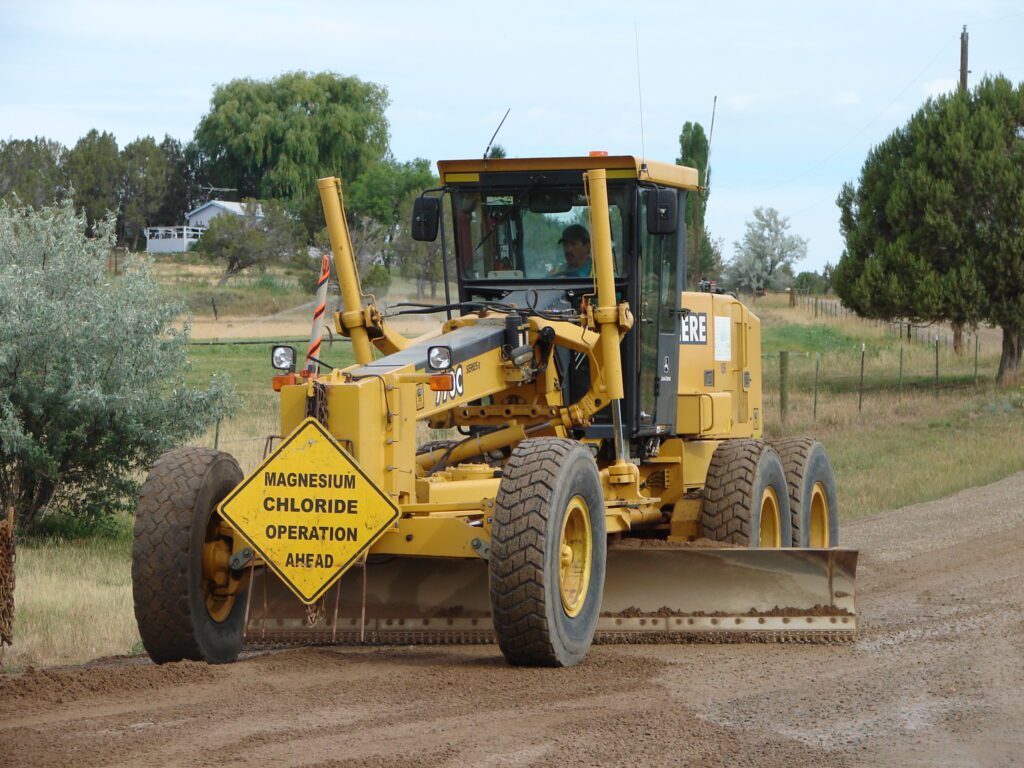
- Grading and Drainage
Road grading is a frequent maintenance practice where the road surface is graded down a few inches, leveled, and shaped to promote proper water drainage. Without good drainage, water can pool on the road, leading to soft spots, washouts, and erosion. By grading the road to create a crown (a slight rise in the middle), water can run off the sides, keeping the road dry and stable.
Properly constructed drainage ditches and culverts are also vital for managing water flow to direct it away from the road surface and prevent long-term erosion damage. - Aggregates and Gravel
Adding gravel or other aggregates to an existing dirt road is one of the easiest stabilization techniques. Additional gravel will increase the road’s strength, improve traction, and provide a hardier surface that resists erosion. The size and type of aggregate used can vary depending on the road’s current condition and the main use of the road. If it has heavier traffic aggregate with larger stones can be utilized. Finer materials can be used for less traveled, smoother surfaces.
To make sure the road stays stable and the aggregate stays on the road better, the gravel should be blade mixed in and properly compacted after application. Regular maintenance should be performed to redistribute and refresh the material as needed. Many roads departments will do this work seasonally. - Mechanical Stabilization
Mechanical stabilization is the road stabilization technique that utilizes native soil, mixing it in with gravel or crushed stone. This will improve the road’s strength and capacity for heavier loads. After it is compacted, it will also help reduce erosion and create a stronger, more consistent road surface.
In some cases, where the erosion has been severe like in the case of landslides and floods, geotextiles or geogrids may be installed beneath the surface for additional stability. These synthetic materials help distribute weight evenly across the road and prevent the movement of soil and aggregate layers, making them particularly useful for roads in danger areas and those with heavy vehicle traffic or poor subgrade conditions. - Chemical Stabilization
Chemical stabilization is a modern approach that uses additives to strengthen the soil and reduce dust. These soil palliatives bind soil particles together, making the road more resistant to erosion and wear.
Some common soil palliatives include:
- Magnesium chloride and calcium chloride: These sodium based products attract moisture from the air and resist evaporation. They bind fine dust and aggregate together, creating a more stable road and minimizing dust. They are an affordable and effective solution.
- Lignosulfonates: An all-natural biproduct from the wood pulping industry, this organic compound helps bind soil particles, reducing dust and improving compaction. It is very effective in dry, arid climates with fine native soil.
- Co-Polymers: For a stronger and more durable solution, co-polymers can be used in many applications including dirt road stabilization. It penetrates down into the soil to create a tough layer of protection.
- Enzymes: These additives enhance soil compaction and create a more resilient road surface. They create a hard, concrete-like surface that is impermeable to water. It can last longer but is significantly more expensive.
Chemical stabilization with soil palliatives are especially effective for areas with high dust generation, heavy traffic, or specific soil challenges like fine, clay, or sandy soils. It can also reduce maintenance needs by prolonging the life of the road. Depending on the product used, they can build up after repeated applications reducing the amount of product needed
for future applications. This allows the roads department to save money, wear
and tear on equipment, and staff time.
- Cement Modified Soil
Cement modified soil is a highly compacted mixture of
cement, native soil, aggregate and water. When compacted and cured, the mixture
forms a hardened, durable road layer. It is widely used as a low-cost pavement
base.
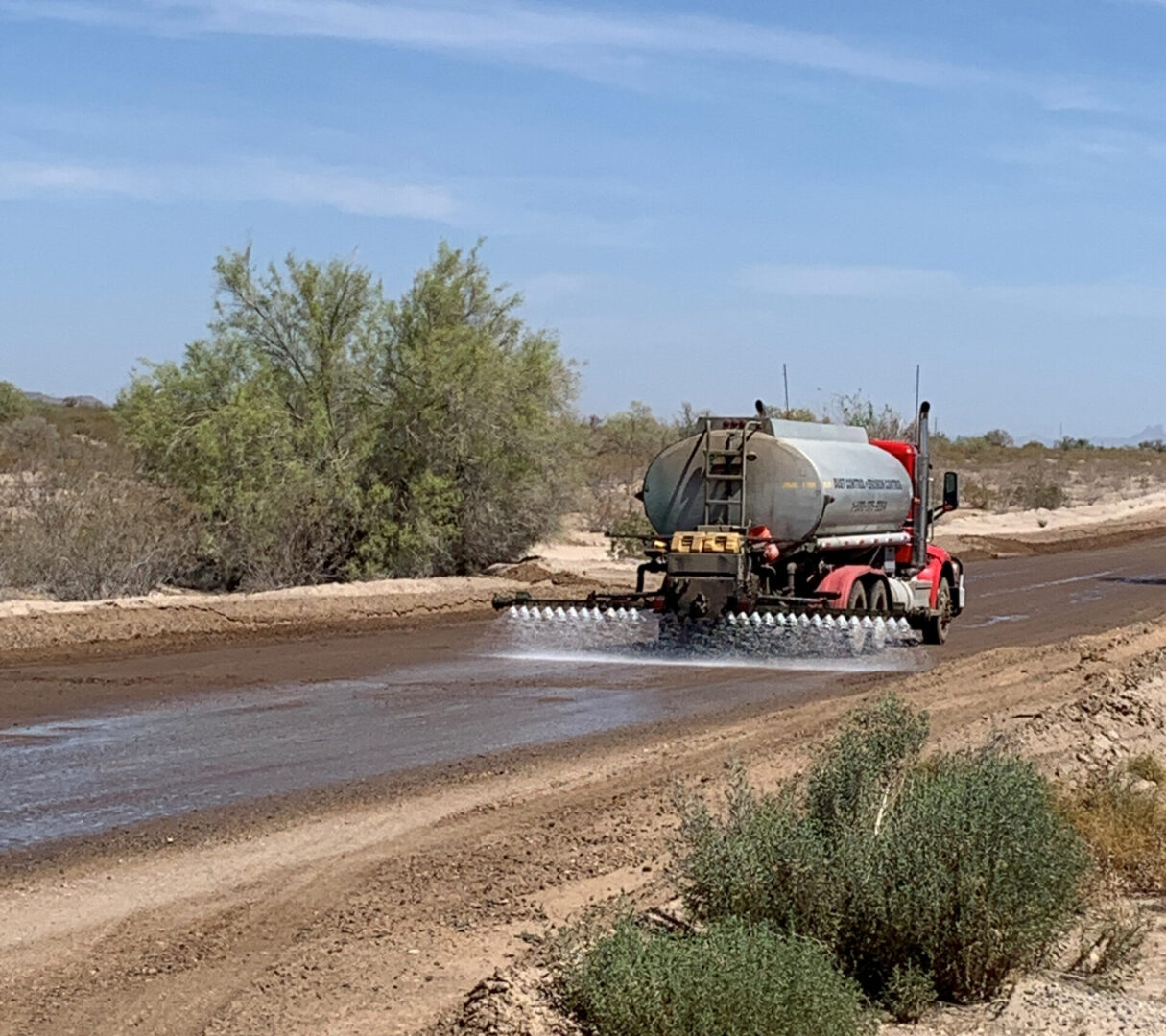

Benefits of Dirt Road Stabilization
Dirt road stabilization offers a range of practical and environmental benefits, making it a critical investment for busy forest service roads, communities and rural areas. By strengthening unpaved roads, it addresses familiar issues like erosion, dust pollution, and poor load-bearing capacity, while also enhancing road safety and reducing long-term maintenance costs. The following sections highlight the key advantages of stabilizing dirt roads, from preventing erosion to improving air quality and ensuring a smoother, more durable driving surface.
- Reduced Erosion
Stabilized dirt roads are less susceptible to erosion caused by weather elements like snow, rain, and wind. When roads and streets departments improve road drainage and reinforce the driving surface using stabilization techniques, it helps keep the road intact during heavy rainfall or extreme weather conditions. Reduced erosion also minimizes the environmental impact by inhibiting sediment runoff into nearby rivers, lakes, and streams. - Dust Control
One of the most immediate benefits of a dirt road stabilization project is the reduction of dust from vehicles and wind events. Unstabilized dirt roads produce large amounts of fugitive dust, which can impair driver visibility, cause respiratory issues, and damage nearby crops. Chemical stabilizers and mechanical compaction will decrease the amount of dust generated, improve air quality, increase safety for drivers, and provide cleaner air for nearby residents. - Enhanced Load-Bearing Capacity
Dirt road stabilization increases its ability to hold up under heavy loads from vehicles, specifically in areas with heavy equipment use or high traffic. By mixing native soil with aggregates or using chemical stabilizers, the road becomes more durable and less prone to potholes and washboards, reducing the need for constant repairs. - Lower Maintenance Costs
Stabilization can substantially reduce long-term maintenance costs for dirt roads. A stabilized road will be more resistant to potholes, washouts, and surface damage, meaning less frequent repairs and regrading. In areas where maintenance is difficult or costly, such as remote locations, stabilization can be especially beneficial. - Enhanced Safety
A well-stabilized road provides a more dependable driving surface, reducing the risk of accidents caused by potholes, ruts, washboards, or washouts. Better traction, less dust, and improved visibility contribute to safer driving conditions, particularly for trucks and heavy vehicles.
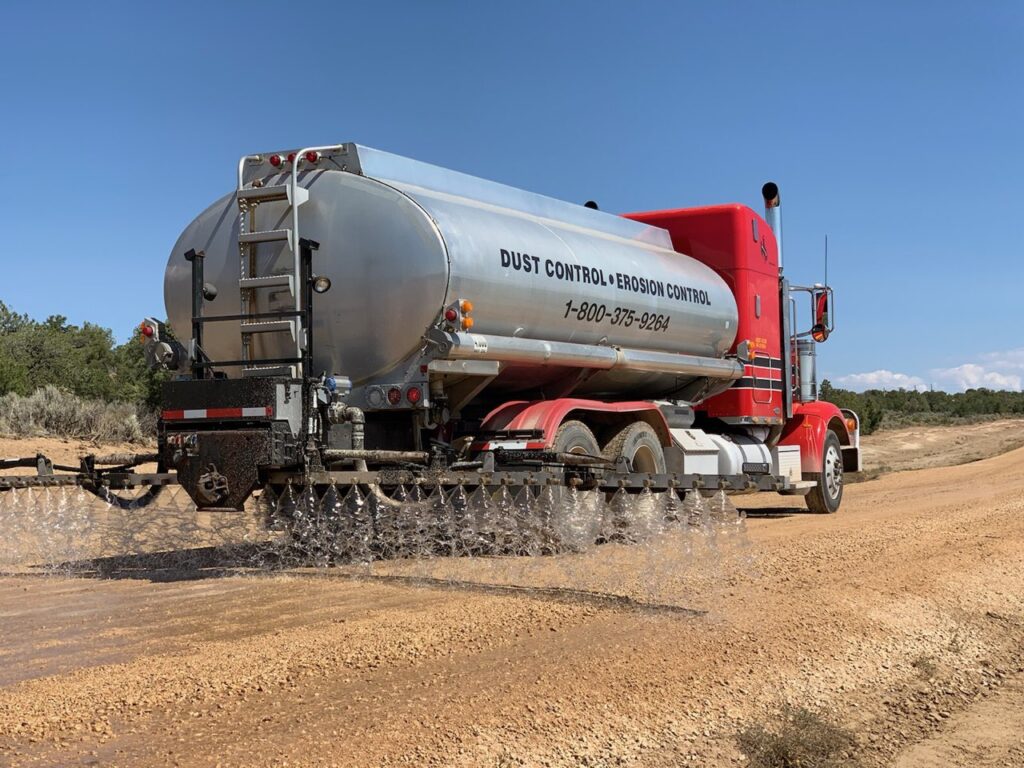
Conclusion
Dirt road stabilization is an essential practice for extending the life of unpaved roads and improving safety for drivers. Whether through traditional methods like adding gravel and grading or more advanced chemical solutions, stabilization helps prevent erosion, reduce dust, and enhance the road’s ability to handle traffic. Investing in stabilization not only lowers maintenance costs but also ensures a safer and more reliable road network for communities and industries alike.
